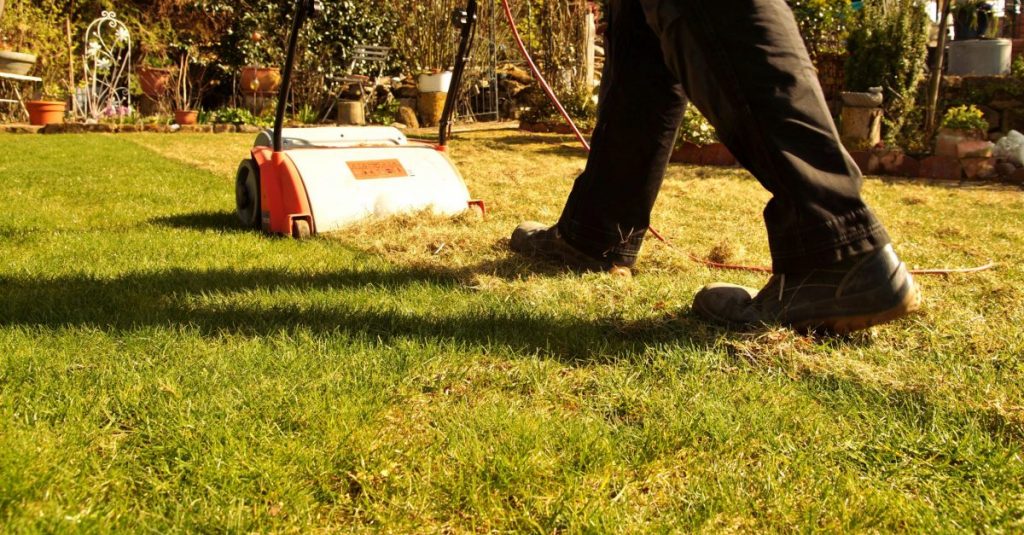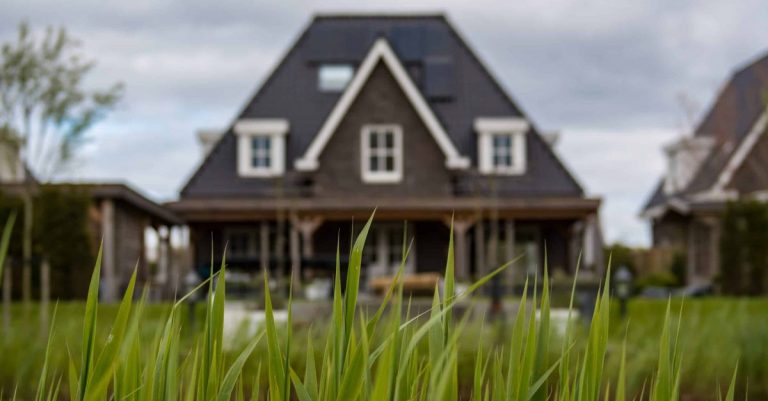Thatch Removal: What It Is and Why Your Lawn Needs It
Thatch Removal
Thatch is a problem for most lawns that can cause them to not look their best. However, many homeowners aren’t even aware of what thatch is or how it can be damaging their grass. Removing this layer once or twice a year will make a world of difference to the health of your lawn. Here we’ll go over what thatch is, how you can prevent excessive build-up, and how to remove it.

Thatch Basics
So what is thatch? Thatch is a layer of organic matter that accumulates on top of your soil, this can include things like leaves, roots, and small amounts of grass clippings. A layer of thatch less than ½ inch deep is actually beneficial to your lawn. This can protect your soil from extreme temperatures, help maintain moisture, reduce weeds, and protect the grass from foot traffic. However, if this layer builds up too much, it can limit the amount of airflow, water, and fertilizers that reach the soil. Thick thatch layers starve the roots of nutrients, breed fungus, and make mowing more difficult.
Preventing Build-Up
Fortunately, there are ways to help prevent excessive build-up of thatch in your lawn. An important note here is that mulching your grass clippings shouldn’t contribute too much to thatch. These clippings are broken down relatively easily and, while clippings can be found in the thatch layer, aren’t typically a huge issue.
A few things that do contribute to excess thatch are the overuse of pesticides and fertilizers. Be sure you use an appropriate amount of each so they don’t start causing problems for your lawn. For more details, check out our helpful guides on pesticides and fertilizer. If you’re still unsure about the proper usage of these products, give us a call and let us handle it for you.

Removal Process
Even if you’re abiding by good care practices for your lawn, you’ll still require thatch removal once or twice a year. If your lawn is spongy, uneven, having drainage issues, or is yellowing, these are all indicators it’s time to dethatch. You’ll want to dethatch while the grass is actively growing, typically during spring or early fall. This will help the lawn recover more quickly and lessen the chances of it being damaged.
To prepare your lawn for dethatching, start by mowing and aerating it. Cutting the grass a little shorter than usual can ease the dethatching process. Aerating the lawn helps break up the soil and makes dethatching much easier. You can aerate your lawn yourself using our guide or let us do it for you during our annual (or bi-annual if your lawn requires it) dethatching. Now it’s time to pick your tool. If your lawn is small and you don’t mind putting in the work, you can use a dethatching rake to manually remove the layer. You can also use a dethatcher, which is a machine that removes the problematic layer as you push it, much like mowing the lawn.
Whichever method you choose, you’ll want to dethatch side to side, then top to bottom to get the layer from all directions. If your thatch layer is very deep, it may require several sessions or professional intervention as the tools available to homeowners may not be up for the job. Once you’ve finished, be sure to rake up and bag all the debris pulled up to the surface. If it’s time to fertilize, this is a good time to do so. Then thoroughly water your lawn so it can recover from the process.
While these annual tasks may not be the most enjoyable part of your lawn care, they’re essential for a healthy, beautiful lawn. By removing thick thatch, you ensure your lawn gets all the nutrients it requires while preventing fungus and other issues that can harm your grass. If you are unsure if your lawn requires dethatching or would rather a professional perform this job for you, give us at Cedar Lawn Care a call today!







